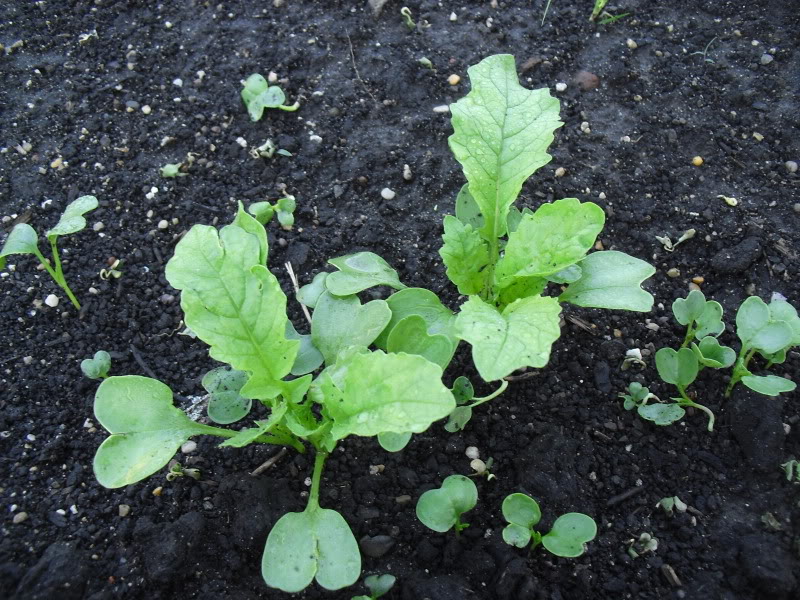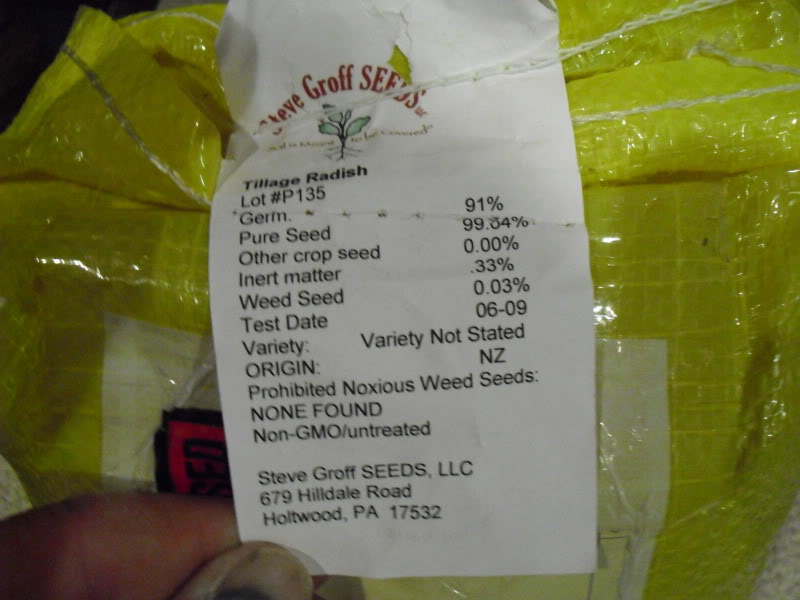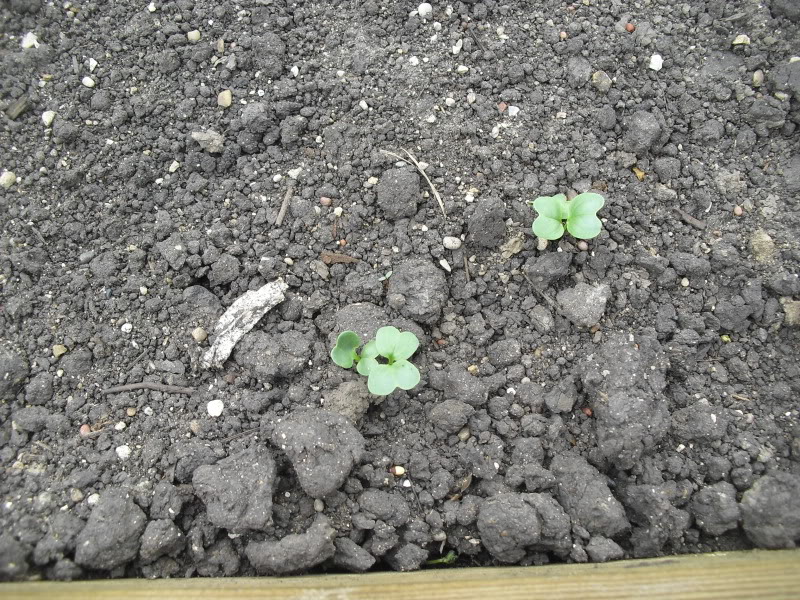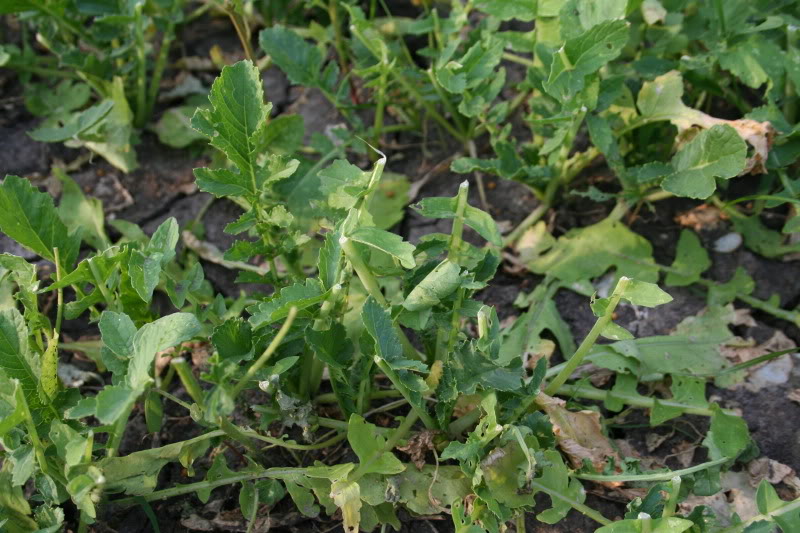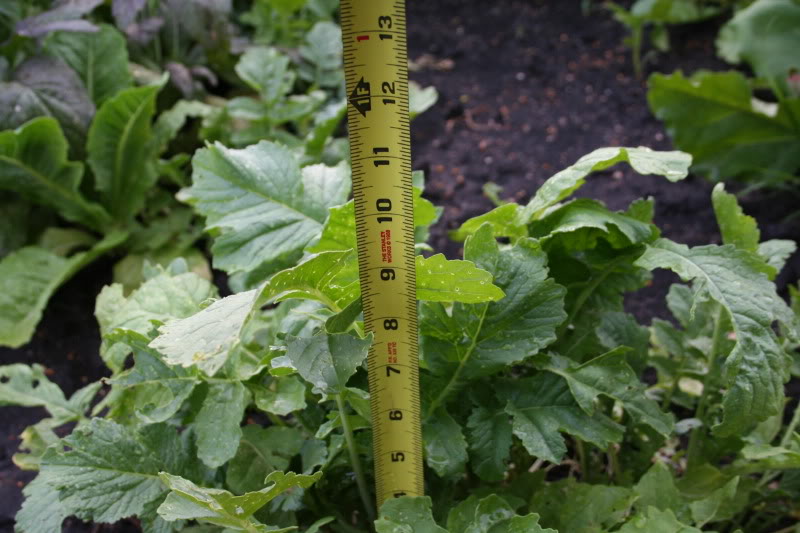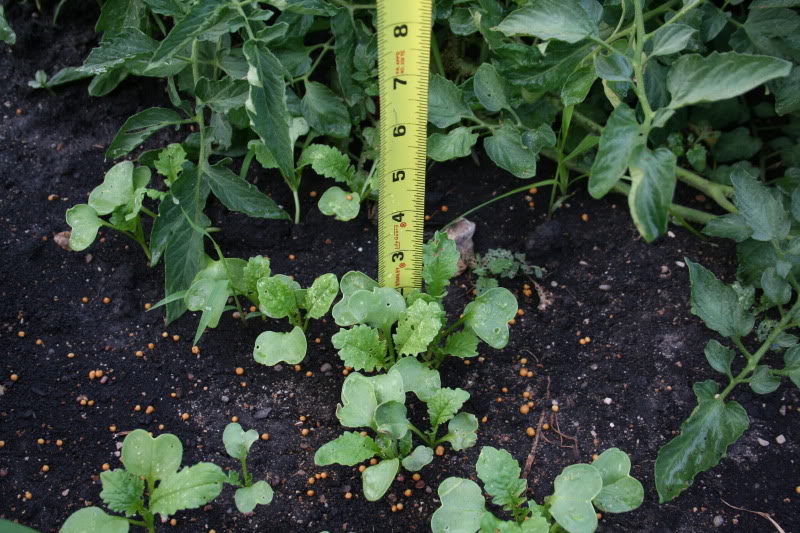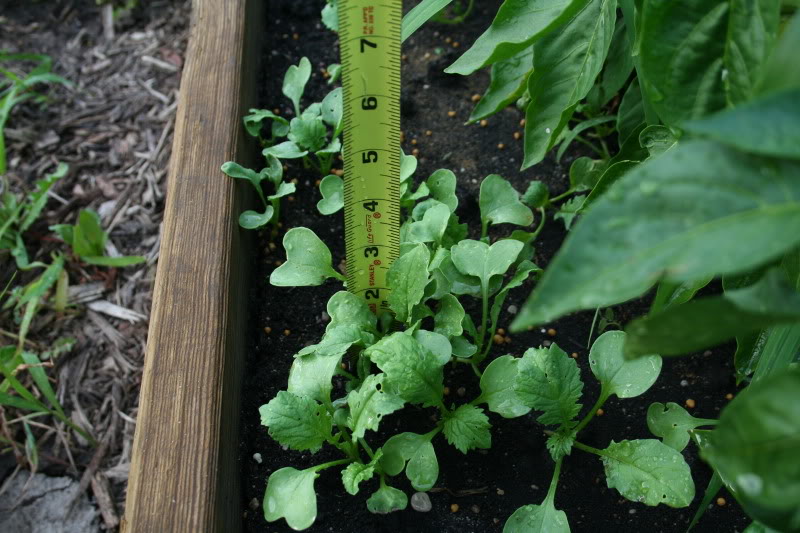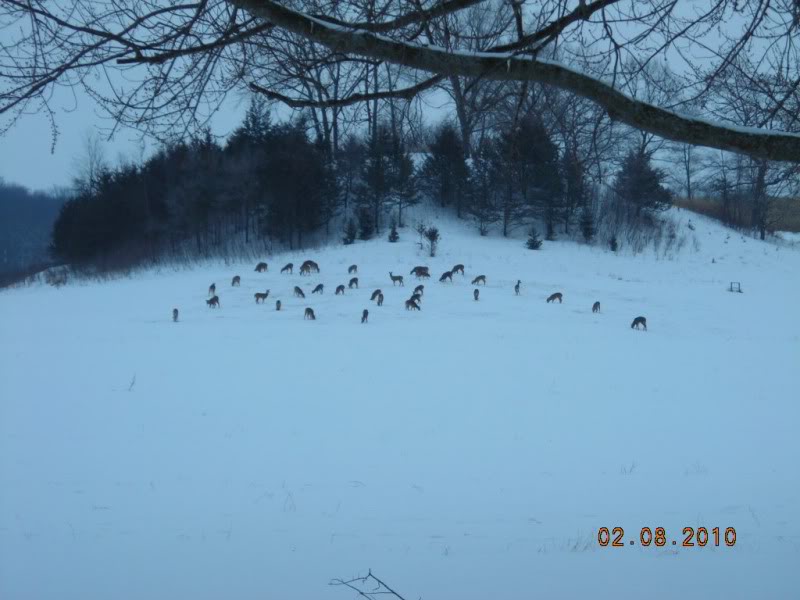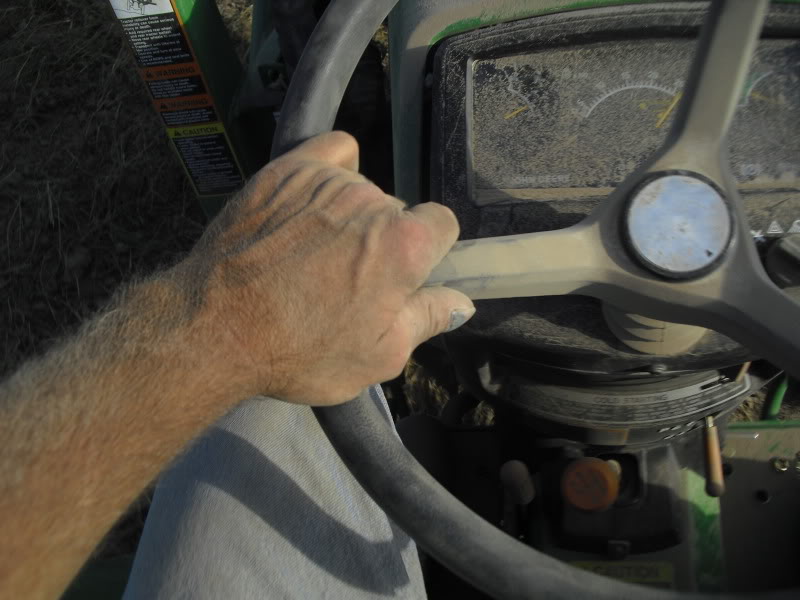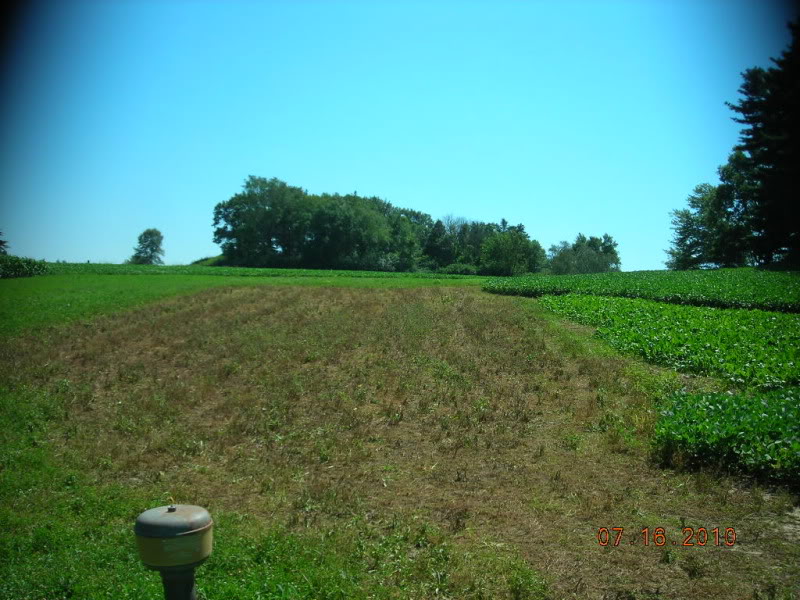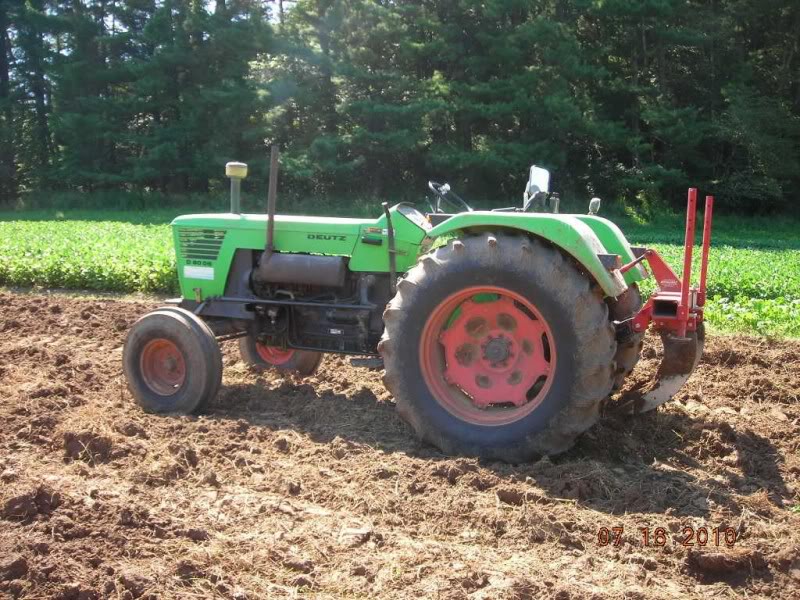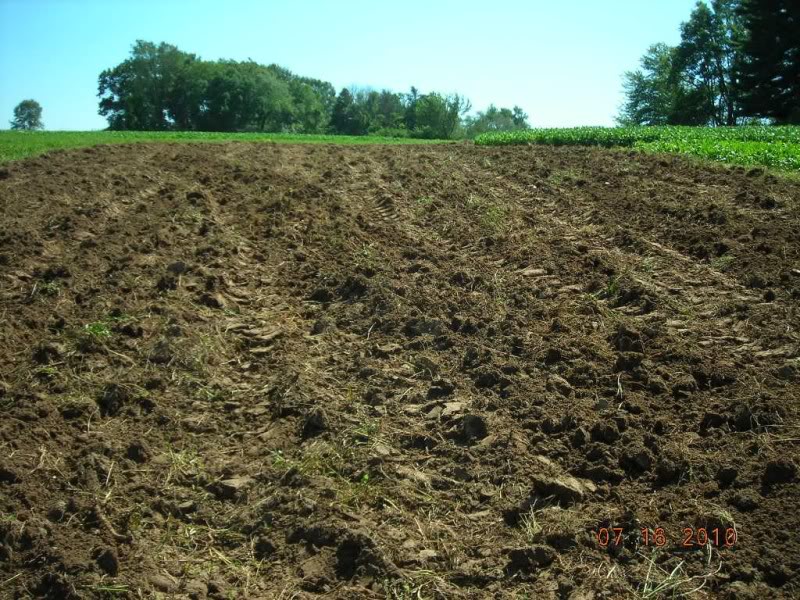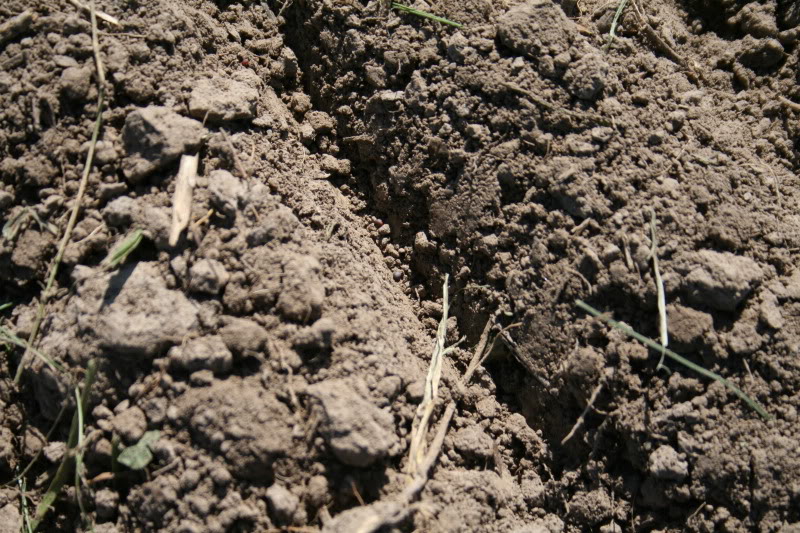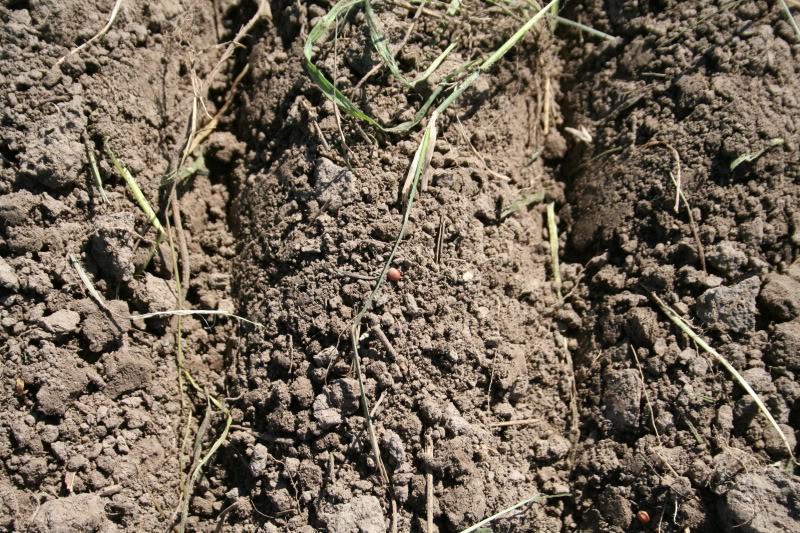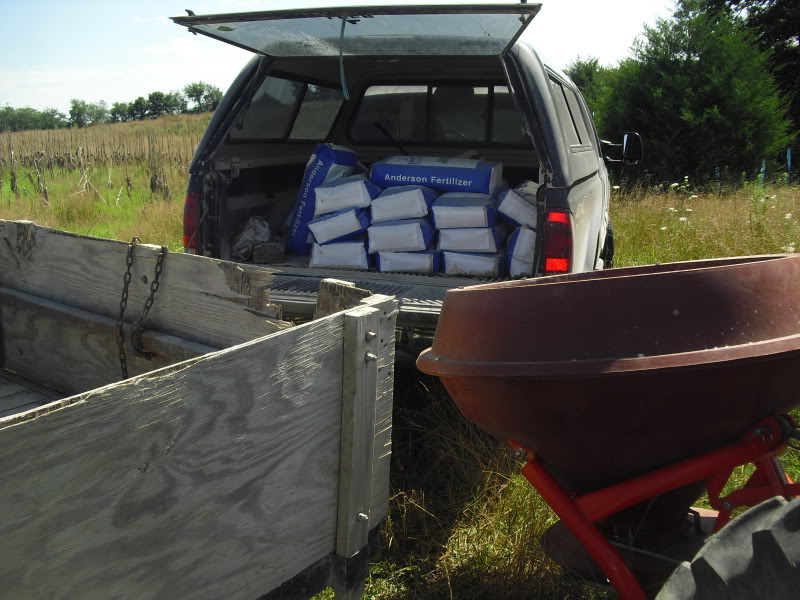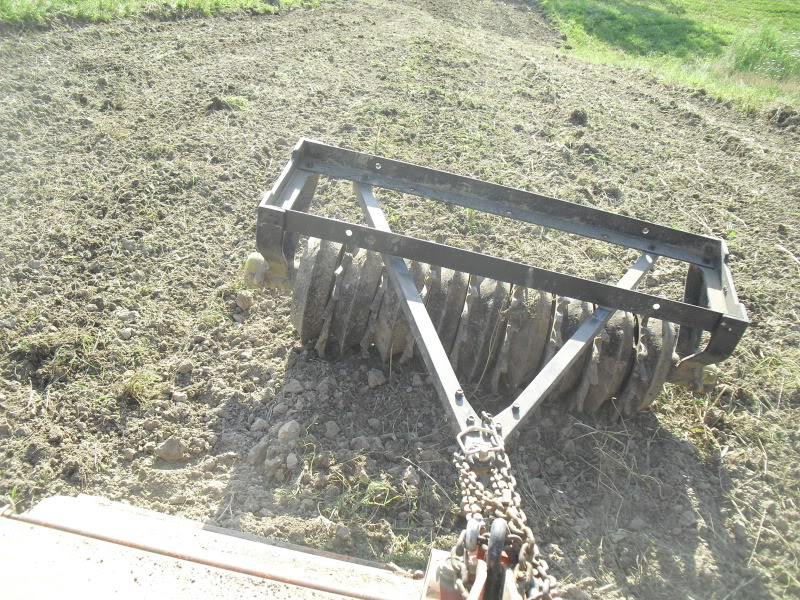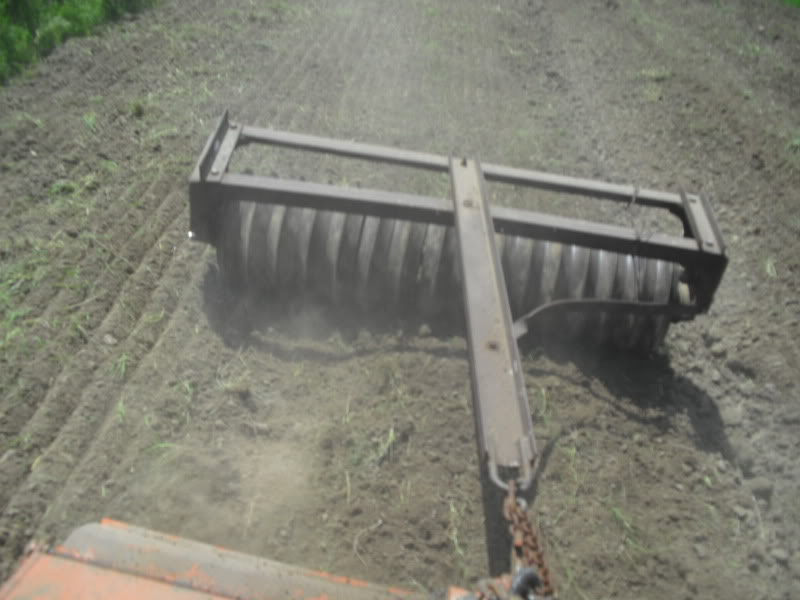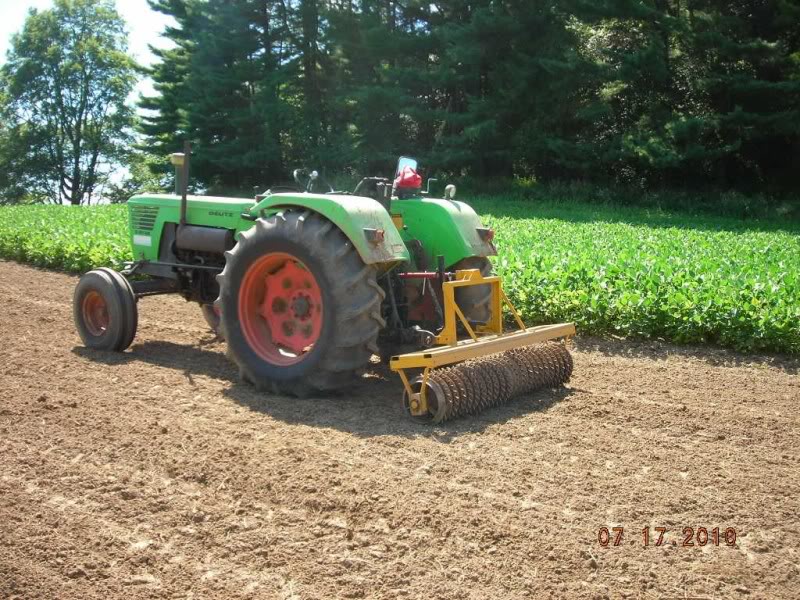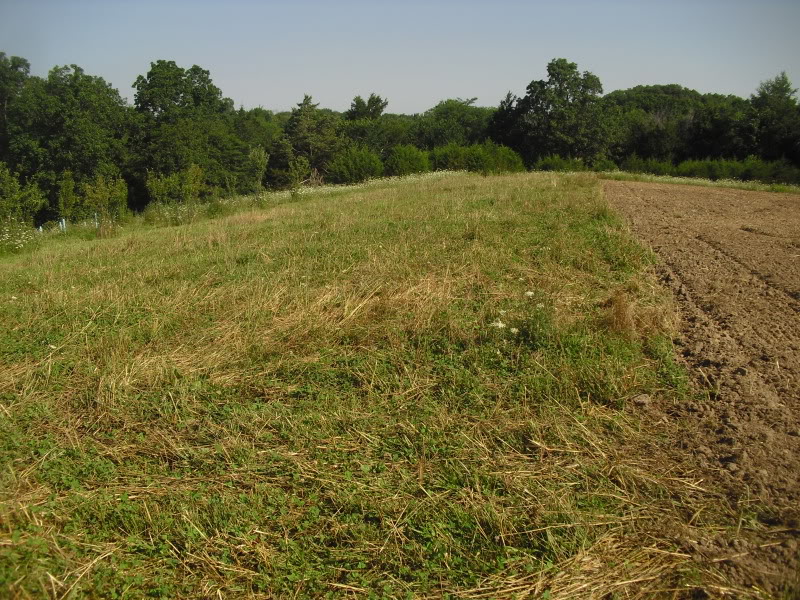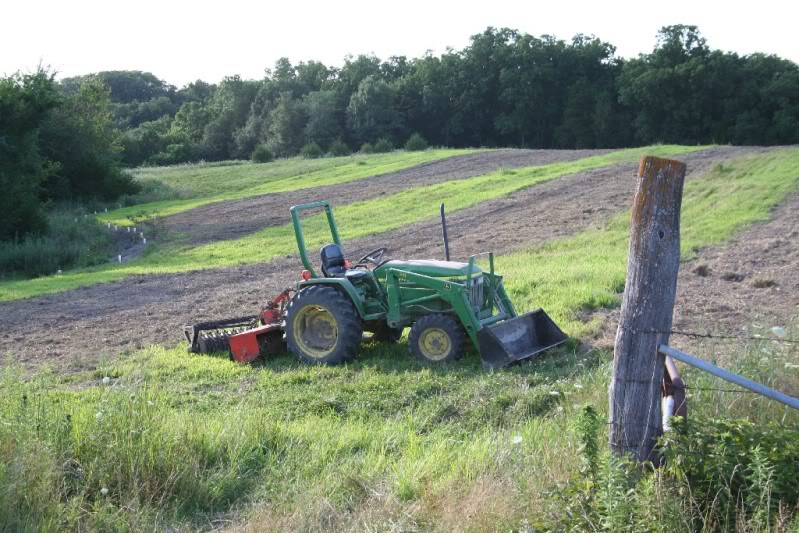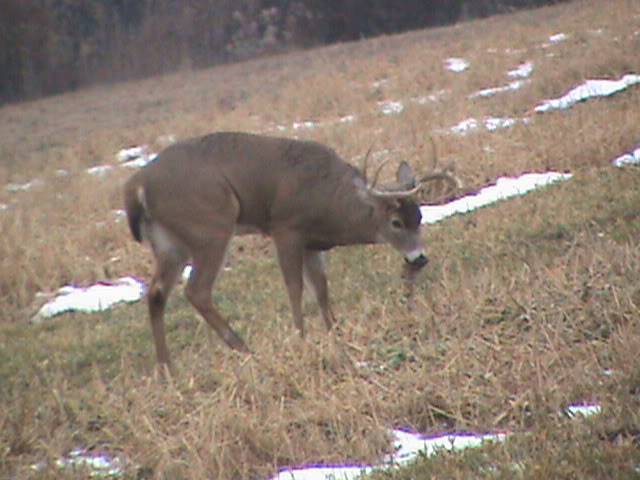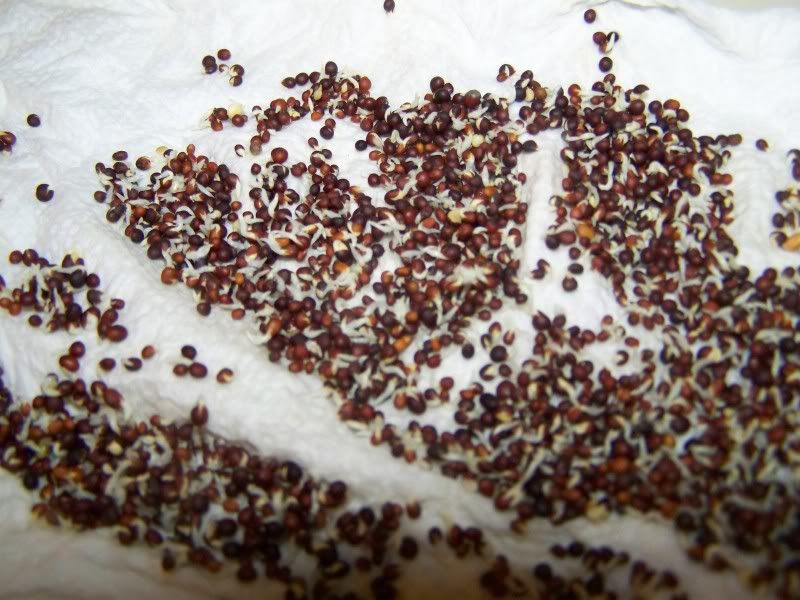Brassica seed is tiny and I don't mean maybe! It's so tiny it's difficult to be certain of coverage and most of us tend to think we haven't put enough on. That leads to overseeding and stunted brassicas so here's a few thoughts that might prove helpful when broadcasting seed by hand rather then drilling.
Rape and turnip seeds...
Forage radish seeds...
We always want to cultipack first to firm the soil because otherwise it's terribly easy to bury the seed to deep....can you see the turnip seed in this pic??
Radish seed is slightly larger and a bit easier to see
I carry a few tools with me to insure that I only put the exact amount in the bag to cover the area to be seeded. I use a small scales that can weigh up to 2#'s of seed and a small pocket calculater along with a coffee can for dipping seed and in this case a bucket of mixed Pasja, Appin, Barkant turnips and Barnapoli Rape Seed and a seperate bucket of Ground Hog Forage radish.
I sowed 5#'s the rape/turnip mix and 5#'s of radish seed but if you budget will not allow heavy applications of nitrogen....cut those rates by 30-50%
I also carry my Nikon 800 range finder and since I am dealing mostly in strips I range the end of the field and pace off the width of the strip.
In this case the strips were all 150 yards long X 3 = 450' and they varied in width from 24 - 50 ft. An example then is 450' X 30' = 13500 square feet. 31% of 43,560 (square ft per acre) is roughly 13,500. I try to sow turnip and rape seed at 5#'s per acre so 31% of 5#'s is 1.55 so I can easily weigh out roughly a pound and a 1/2 and now with certainty that I have exactly the right amount of seed for that strip.
If I have a little left over I go back over the strip til it's gone but if the bag is full of seed it removes the temptation to put a LOT more on thinking I mave have not put on enough.
Even at that....how do you know what setting to put your seeder on??
In this case because the Groundhog Forage radish is slightly larger seed, I used it to set the opening.
A few seeds placed in the bag allow you to open the gate until the seeds can just pass thru...
The set the stop for the gate which on my Earthway spreader is roughly 1.5
After sowing one strip I then have confidence that I applied the correct amount of seed...had I run out or had twice too much I would have needed to make further adjustments but that setting (that just barely allows seeds to pass thru) worked perfectly.
Each strip or block was slightly different but I could quickly pace off the width and weigh out the exact amount of seed in moments. One the seeder is set of course weighing out each field or plot might not be necessary but I feel more comfortable knowing that I have a precise amount of seed with no guesswork.
Previous to seeding I had applied fertilizer and tilled it in, a soil test can takes some guess work out but brassicas tend to require at least 75#'s of nitrogen and 40 pounds of P2O5 and 80 pounds of K2O. On my friend Walt's place we used 400#'s of triple 19 to ensure we had 80#'s of each.
On my own farm where P&K levels have been maintained but grazing pressure is intense I used 200#'s of 46-0-0 urea and 200#'s of 6-24-24 per acre. I had smaller strips so I applied the fertilizer with my bag seeder using the same calculations as for the seed. I didn't weigh it out but if I needed 44#'s I left a few pounds in the bag or if I needed 70#'s I used a bag and a 1/2. I opened the gate all the way and walked at a good clip and got pretty even and accurate coverage.
The importance of cultipackers when sowing brassicas cannot be over emphasised if you can get ahold of one. Walt's is a 4 footer and is slightly narrower then my 60" tiller.
Mine is 6' so it covers my wheel tracks well. Note my finely engineered, redneck approved hitch!

Mike on the otherhand is a classier plotter and has a neat 3 pt hitch packer that also does a beautiful job!:way:
I pull the packer behind the tiller when tilling in the fertilizer so it's ready to sow seed, then broadcast seed and re-pack.
One advantage of strip plotting is that deer always have food sources even while the brassicas are growing. Here you can see the white and red clover that was planted last fall with winter rye that is not only feeding deer but fixing nitrogen at the same time.
On the other side of the planted brassicas is a white clover strip that will remain in clover for several years. We just keep rotating each year...brassicas where rye and clover was and rye and clover where brassicas were. It's a no brainer method of having all your favorite food sources in one field every year without planting them in the same spot, thus controlling pests and disease.
At the end of the day it's nice to look back on a job well done....this morning we got 2 1/2" of rain! Thank you God!
and dream about those big boys munching on turnips in December...
Plenty of time to get brassicas planted if you haven't already!

